| Umělec magazine 2000/3 >> An Attack is the Best Defense | List of all editions. | ||||||||||||
|
|||||||||||||
An Attack is the Best DefenseUmělec magazine 2000/301.03.2000 Lenka Lindaurová | biennial | en cs |
|||||||||||||
|
"The symbol of the border, which has often and ambiguously been used in art theory was dusted off again and applied as the theme for this year’s third Manifesta biennial of contemporary European art. Borderline Syndrome, a title chosen by the Manifesta curators, comes from psychology and defines the need to defend. They could hardly have chosen a better metaphor for addressing some current problems. It seems significant that Czech artists were not selected for this year’s Manifesta as, according to the curators, they had no defense syndrome. When it comes to borders and limitations in the Czech consciousness, however, one could find plenty of examples.
In the end, the theme settled into political and social positions, and the issue of borders between West and East emerged once again as it now takes on whole new dimensions in the crowded line to enter the European Union. Furthermore, Manifesta’s move from West to East (the first one took place in Rotterdam and the second in Luxembourg) is questionable, as Ljubljana, in fact, has never been part of the real East. The position of individual cultural institutions makes it evident, however, that a border still exists between the West and post-communist East. The border, which, in the Eastern subconscious, includes an alert defense element, flaunted its stuff during the Untranslatable Distances panel discussion when a member of the audience defined the difference between western and eastern toilets: while in the west, feces disappear immediately down the drain, people in the East feel the need to examine it on the bowl’s raised platform. Fortunately, Manifesta presented works on a more general level, and the whereabouts of the author was secondary. Because the works selected were not supposed to represent individual countries, and it was to come off as a sort of alternative European salon, the biennial catalogue did not state the artists’ nationalities, but only mentioned the countries where they currently work. The curators avoided an effective selection of well-known stars, and the viewer was thus oriented only on the basis of what he/she could actually see. The careful selection mainly rested on the fact that the works do not come off as mere illustrations of the given prediction, as is often the case during thematic exhibitions. Manifesta 3 is an experiment in other aspects as well: it does not wish to establish yet another institution or to create stereotypes of ambitious shows but wishes to maintain its emancipated nature. When you, however, go through the monstrous midnight opening with a speech by Henry Meyric Hughes, president of Manifesta 3 International Committee, complete with a line-up at stands for a portion of bacon—for the lucky ones—and a folklore musical performance, you immediately feel the borderline syndrome awakening inside you in its most destructive form. Adding the behind the scenes issues connected to the various power games that always leak out, you come to the conclusion that any “liberating” attribute to this event is just another cliché. Fortunately, the artists speak for themselves. Some of them deal with the need for defense on a personal level, where the collapse of the outside world is reflected with all the more vigor. A video loop by Ene-Liis Semper from Tallinn presents not one but two suicides; they appear neither pathetic nor sentimental. Semper, present at the Manifesta opening, looked like she wasn’t that far from suicide herself. In videos by Joost Conijn from Tilburg, the defense reflexes are displayed a bit more bizarrely and grotesquely. In the video Airplane, Conijn attempts to assemble a plane out of old parts and fly away. The video A Strange Message from Another Star by Veli Granö from Helsinki also shows the main character longing to escape at any price. The pseudo (?) documentary is the story of a man who, ever since World War II, has longed for nothing but to assemble a rocket and take off to another place, which is not as self-destructive and fervid. A similar dose of indetermination is inherent in the video Wisla by Josef Dabernig from Vienna. It is, however, put together in a downright comic style: two coaches, looking like cut-outs from the socialist realist 1970s, are watching what it going on behind the backs of cameras and what, guessing from the sounds, seems to be a match. Their serious and ridiculous world shows itself to be nonsense when they shake hands with other aparatchiks in an empty stadium. Roland Boden’s bunkers, or Urban Modern Shelter Units, like the projects by Andrea Zittel but with an assertive political subtext, find themselves in the position of defending private space as it is confronted by unacceptable surroundings. In addition to being an isolated den, or a mobile observation point, the bunkers may also be used as coffins or as a terrorist gun-pit. Ursula Biemann from Zürich explores geopolitical issues with documentary precision in her video Performing the Border, which focuses on the dark side of the process of emancipation for Mexican woman crossing the US border to work for the exploitative company Philips or to give birth across the border. This radical film also gives the exact number of victims of murderer, drugs and psychological disintegration and is a prototype for contemporary art with a commitment, which is still trying to “save” the world and is on the border of life and art. Šejla Kamerić installed her critical contribution to political life in Europe directly in Ljubljana. She placed light signs on both sides of a bridge, one said EU Citizens and the other said Others. A project by the group Škart, Time of Shits, could also be interpreted as an ironic self-reflection. Their small signs forbade free shitting in the city. Your shit—your responsibility, says the laconic text in the catalogue, which only supports the above mentioned toilet theory. Though fitting the theme, some of the projects lost strength due to the exaggerated persistency with which they tried to satirize post-Communist experience. At first sight, Agnese Bule’s (Riga) animation appeared very nice, but it eventually used the unacceptable symbol of people coming out of barrels to show the parallel between freedom and non-freedom. The Stalker group from Rome also conceived their installation Transborderline superficially, materializing an imaginary line into a spiral, and the circulation of people in an “open” space was accompanied by plastic balls. In contrast to this, the gesture by Nayia Frangouli and Yane Calovski appeared really light: they mixed Macedonian and Greek songs while offering fresh oranges and apples outside the exhibition space. Also, the Dutch design group Schie 2.0 subtly understood the theme as they exhibited B&W posters entitled Holland is a Well Regulated Country. Signs that express what is, and what is not allowed, in an objective, dry manner which doesn’t leave any space for questions accompanied the simple documentary photographs by various social situations: this employee must say ‘thank you’ and ‘please’ to her colleague; it is firbidden to have sex in a public space, etc. A single blue line by Edward Krasiński from Poland represented the only painting project in Manifesta. The line cut through the exhibition spaces as an indicator of hope and perhaps even some sort of goal. Although Manifesta is running the risk of exaggerated officialism, and is becoming yet another place for financing various ambitions, this year’s well-chosen theme implicitly included timely problems in the European continent (and heavy complexes by post-Communist citizens), which helped the event’s quality. In many cases, visitors to Manifesta 3 came in contact with art as opposed to its posings. Discovering common problems, absurdities and obsessions provokes the question of whether the borderline syndrome should not be first dealt with among top politicians. Manifesta 3. Curated by Francesco Bonami, Ole Bouman, Mária Hlavajová, Kathrin Rhomberg, Ljubljana. June 23-Sept. 24, 2000. www.manifesta.org "
01.03.2000
Recommended articles
|
|||||||||||||
|
04.02.2020 10:17
Letošní 50. ročník Art Basel přilákal celkem 93 000 návštěvníků a sběratelů z 80 zemí světa. 290 prémiových galerií představilo umělecká díla od počátku 20. století až po současnost. Hlavní sektor přehlídky, tradičně v prvním patře výstavního prostoru, představil 232 předních galerií z celého světa nabízející umění nejvyšší kvality. Veletrh ukázal vzestupný trend prodeje prostřednictvím galerií jak soukromým sbírkám, tak i institucím. Kromě hlavního veletrhu stály za návštěvu i ty přidružené: Volta, Liste a Photo Basel, k tomu doprovodné programy a výstavy v místních institucích, které kvalitou daleko přesahují hranice města tj. Kunsthalle Basel, Kunstmuseum, Tinguely muzeum nebo Fondation Beyeler.
|




















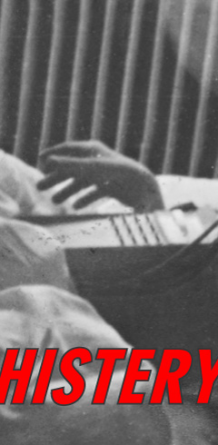






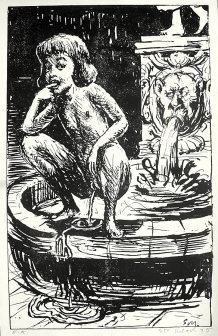




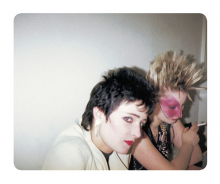
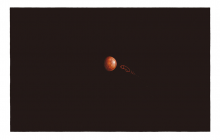
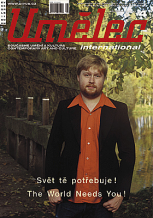
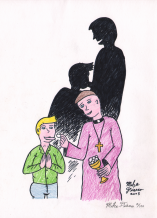


 We Are Rising National Gallery For You! Go to Kyjov by Krásná Lípa no.37.
We Are Rising National Gallery For You! Go to Kyjov by Krásná Lípa no.37.
Comments
There are currently no comments.Add new comment